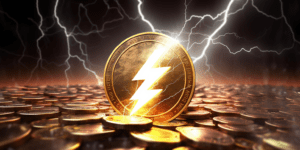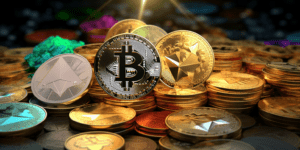Introduction
In the fast-evolving landscape of blockchain and digital assets, XRP has emerged as a prominent player with a unique focus on bridging traditional finance systems and the world of blockchain. Ripple, the company behind XRP, aims to facilitate cross-border payments and improve the efficiency of global financial transactions. In this article, we delve into the role of XRP in bridging the gap between traditional finance and the blockchain ecosystem.
1. XRP: Beyond a Cryptocurrency
- Digital Asset for Cross-Border Payments: While XRP is often categorized as a cryptocurrency, its primary use case is as a digital asset designed for facilitating cross-border payments.
- Ripple’s Vision: Ripple, the company behind XRP, envisions a world where value can be transferred as easily as information, making international transactions faster, more cost-effective, and secure.
2. The Traditional Cross-Border Payment Challenges
- Liquidity Issues: Traditional cross-border payments often face liquidity challenges, requiring multiple intermediaries and resulting in delays and higher costs.
- Pre-Funding Requirements: Many traditional systems necessitate pre-funding accounts in different countries to facilitate swift transactions, tying up capital and increasing risk.
- Opaque Transaction Process: Lack of transparency in the traditional cross-border payment process can lead to uncertainties and disputes.
3. How XRP Addresses These Challenges
- Speed and Efficiency: XRP transactions settle in a matter of seconds, offering a significant improvement over the time it takes for traditional cross-border payments to clear.
- Cost-Effectiveness: Ripple aims to reduce costs associated with cross-border payments by eliminating the need for multiple intermediaries and minimizing the capital tied up in pre-funded accounts.
- Transparency: The use of blockchain technology ensures transparency and traceability in the XRP transaction process, providing a clear view of the payment journey.

4. Ripple’s Products Leveraging XRP
- xCurrent: Ripple’s xCurrent is a solution designed to enhance the efficiency of cross-border payments. It enables real-time, end-to-end tracking and settlement without the need for pre-funded accounts.
- xRapid: xRapid utilizes XRP as a bridge currency to facilitate cross-border payments. It enables on-demand liquidity, reducing the need for pre-funded accounts and minimizing transaction costs.
- On-Demand Liquidity (ODL): ODL, powered by XRP, allows financial institutions to source liquidity on-demand, enabling faster and more cost-effective cross-border payments.
5. Partnerships and Adoption
- Financial Institutions: Ripple has forged partnerships with numerous financial institutions worldwide, including banks and payment service providers, to integrate its solutions and leverage the benefits of XRP.
- Regulatory Compliance: Ripple emphasizes regulatory compliance, working with financial institutions to ensure that its solutions adhere to global regulatory standards.
6. Challenges and Criticisms
- Regulatory Scrutiny: The regulatory status of XRP has faced scrutiny, with ongoing legal challenges concerning its classification as a security.
- Industry Perception: While some financial institutions have embraced Ripple’s solutions, others in the industry remain cautious, citing concerns about the volatility of cryptocurrencies.
7. Future Outlook and Developments
- Regulatory Clarity: Regulatory developments will play a crucial role in shaping the future of XRP and its integration into mainstream financial systems.
- Global Adoption: Increased adoption by financial institutions globally could position XRP as a key player in cross-border payments and bridge the gap between traditional finance and blockchain.
8. Conclusion
XRP’s role in bridging traditional finance and blockchain represents a compelling effort to address the inefficiencies inherent in cross-border payments. As Ripple continues to collaborate with financial institutions and navigate regulatory landscapes, the future of XRP as a digital asset facilitating seamless and cost-effective global transactions holds significant potential. The ongoing evolution of the financial industry and the increasing acceptance of blockchain technologies will likely play a pivotal role in shaping XRP’s impact on the global financial ecosystem.
Disclaimer: This article is for informational purposes only and does not constitute financial, legal, or investment advice. Readers should conduct their research and seek professional guidance where necessary.







